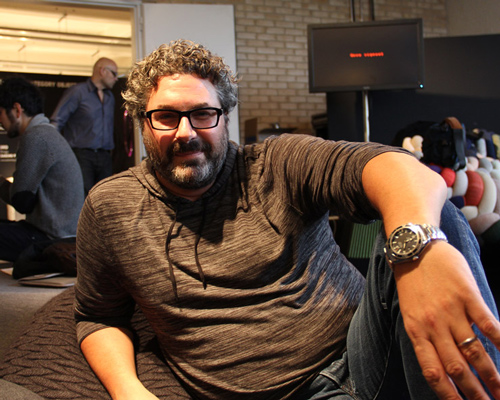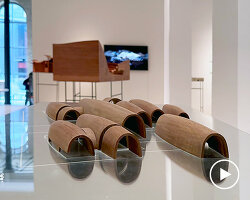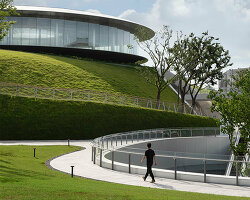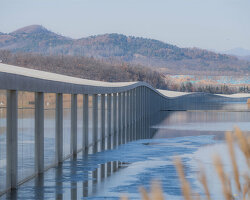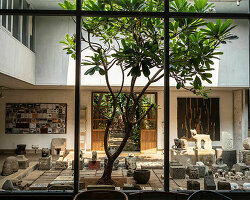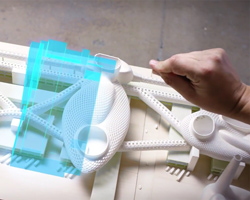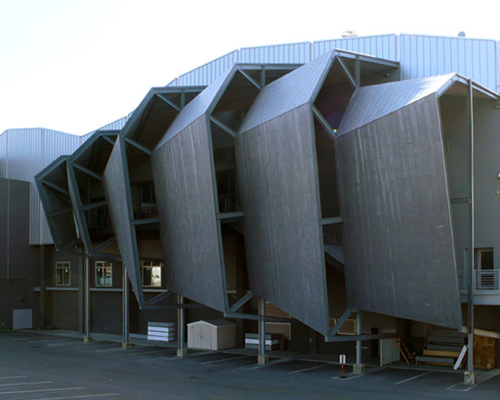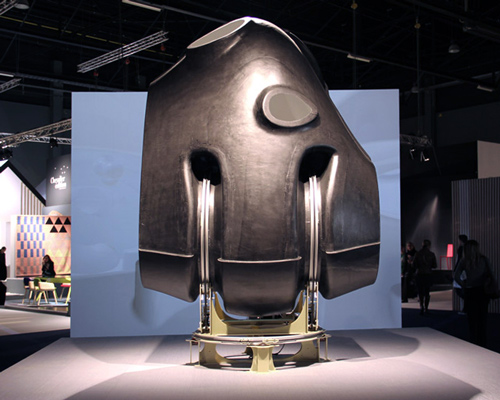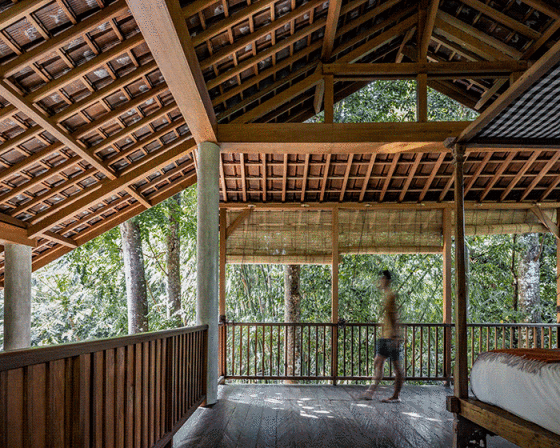greg lynn of greg lynn formportrait © designboom
—designboom met with architect greg lynn of greg lynn form in kortrijk, belgium on october 20, 2012.
—
what is the best moment of the day?
it’s usually when I wake up. I like a cup of coffee, sunrise, the day hasn’t started yet, that’s when I am most creative anyway.
what type of books are on your beside table?
I don’t have books on my beside table anymore because I have a tablet. and it’s funny because I have been reading more than ever now that I have a tablet. for example I have been reading kinda funny stories of a whaling. I just read the biography of the essex disaster… and reading all these stories about american quakers and whaling.
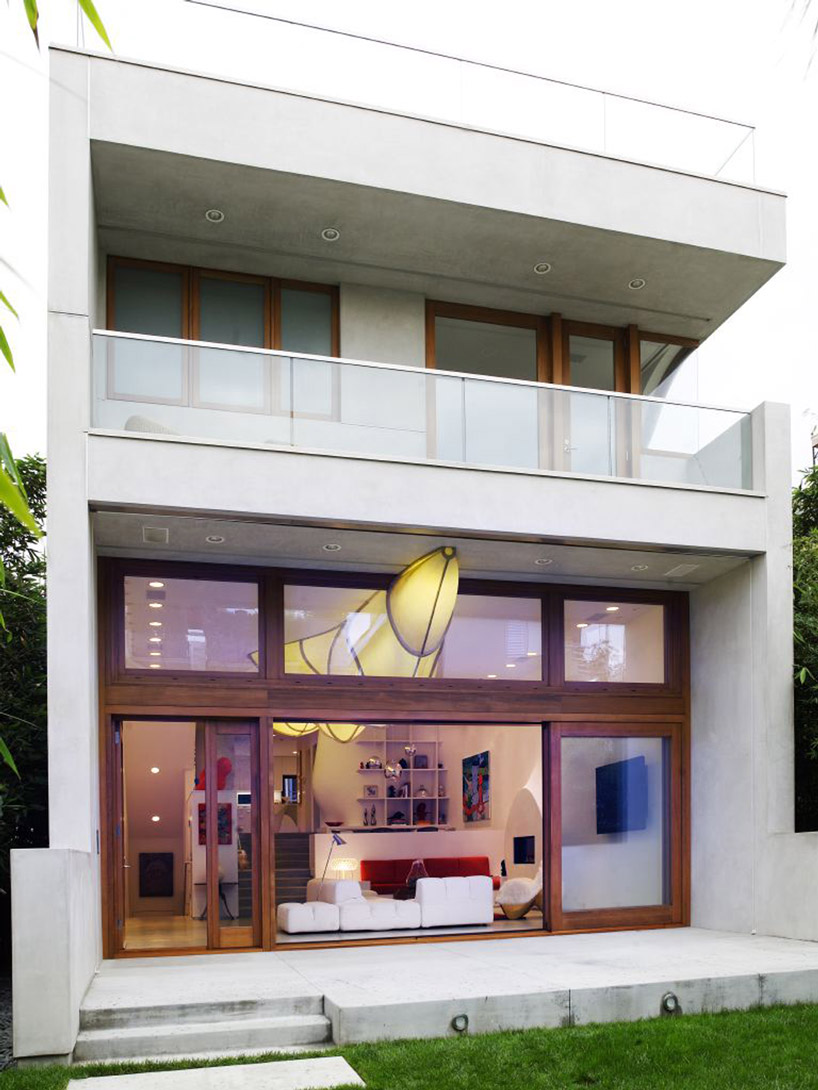 ‘bloom house’ by greg lynn formimage © richard powers
‘bloom house’ by greg lynn formimage © richard powers
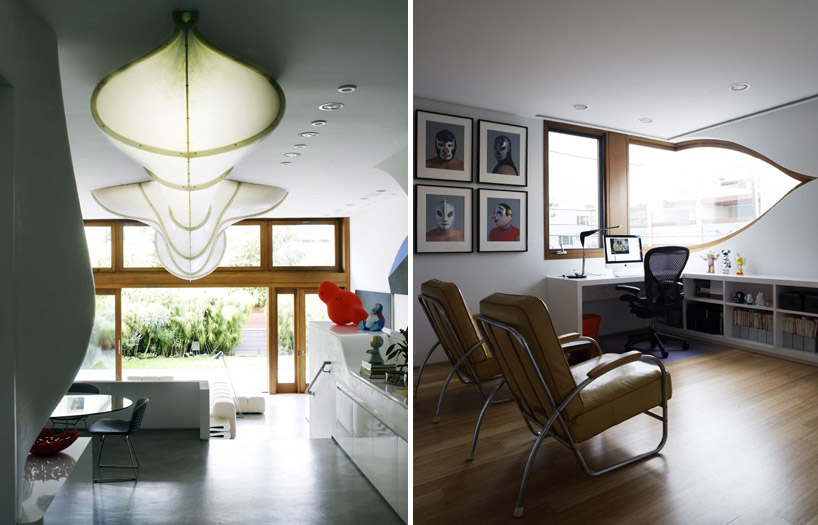 (left) lighting detail(right) officeimage © richard powers
(left) lighting detail(right) officeimage © richard powers
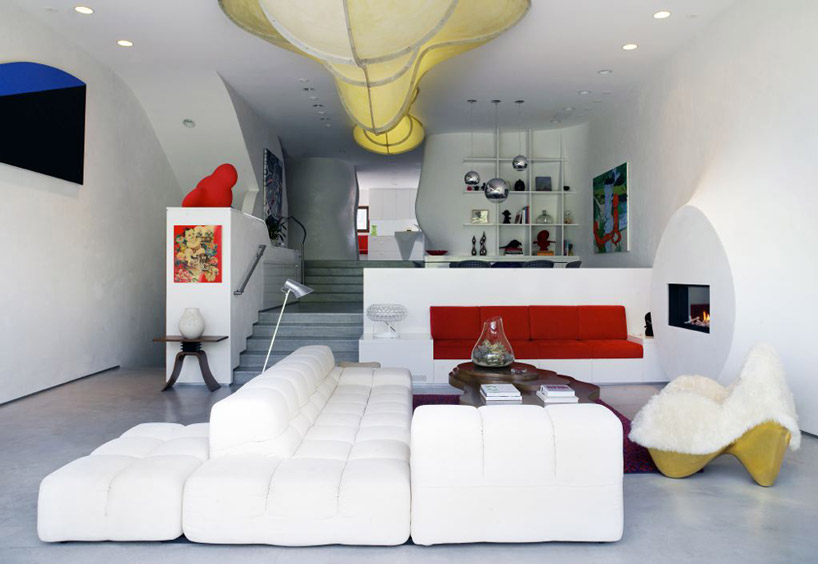 living areaimage © richard powers
living areaimage © richard powers
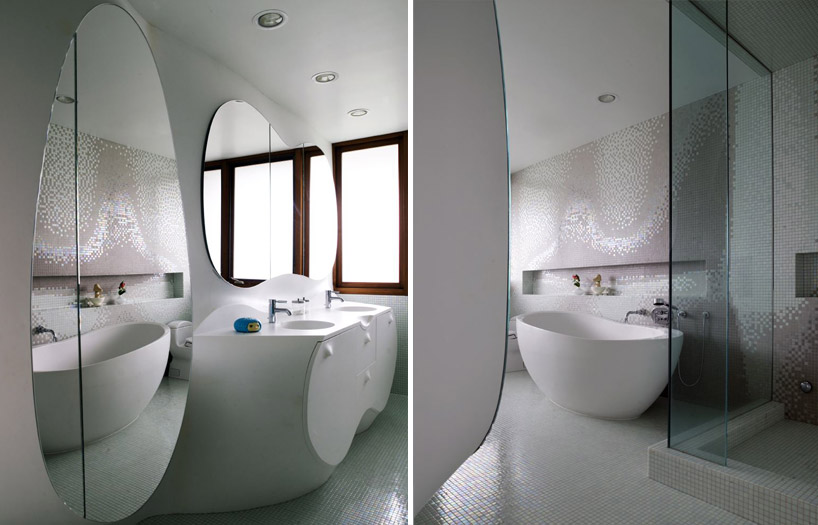 (left) custom mill-work(right) soaker tub and showerimage © richard powers
(left) custom mill-work(right) soaker tub and showerimage © richard powers
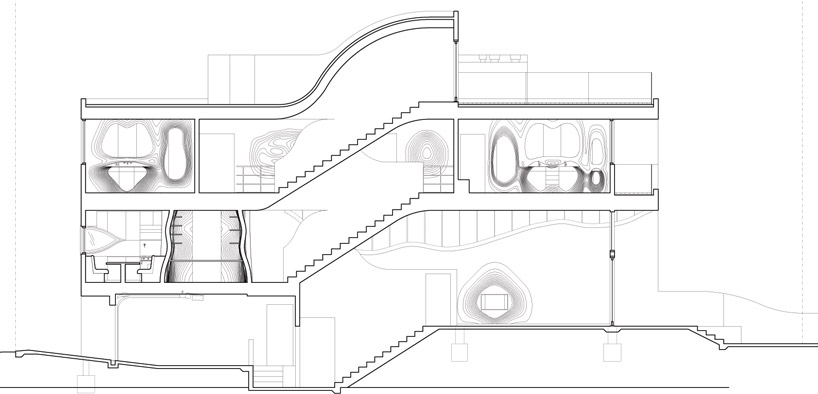 sectionimage © greg lynn form
sectionimage © greg lynn form
do you listen to the radio?
yeah, in the office we have the radio on all the time. we usually listen to a local LA station, so its music until lunchtime. then a couple hours of news until somebody starts to get depressed, and then we put our own music on.
where do you get your news from?
I’ll look at all these aggregator sites, like huffington post, and daily beast, and things like that. and then usually based on that I’ll look at LA times, NY times, financial times. but all of it is online now. I don’t have a paper newspaper anymore.
do you read architecture / design / science magazines?
yeah, I have, um, when I travel, I’ll usually grab ten magazines. I think probably, the design magazines are a little more interesting to me than the architecture magazines.I have a complicated relationship to the architecture print publications. I think they are… there used to be… some really good ones that had both, news about the industry, but also, critical writing and provocative texts. and now the ones I see are mostly kind of commercial. I’m interested in a few magazines that started off as one thing and have become design magazines, like fast company, and it’s kind of interesting to see what they are doing.
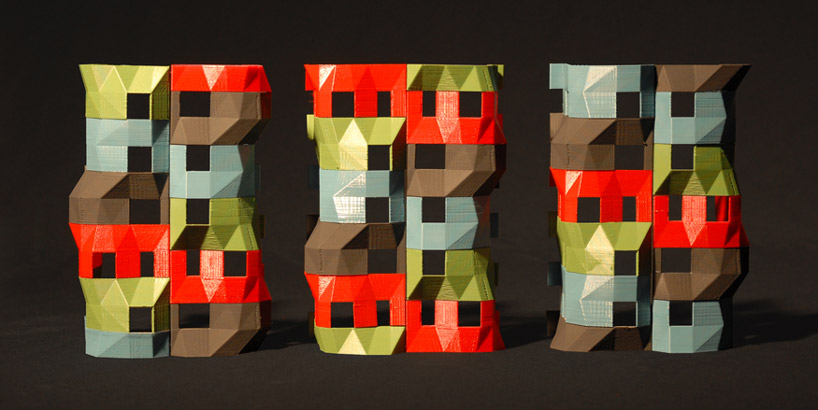 ‘sociopolis housing block’, valenica, spainimage © greg lynn form
‘sociopolis housing block’, valenica, spainimage © greg lynn form
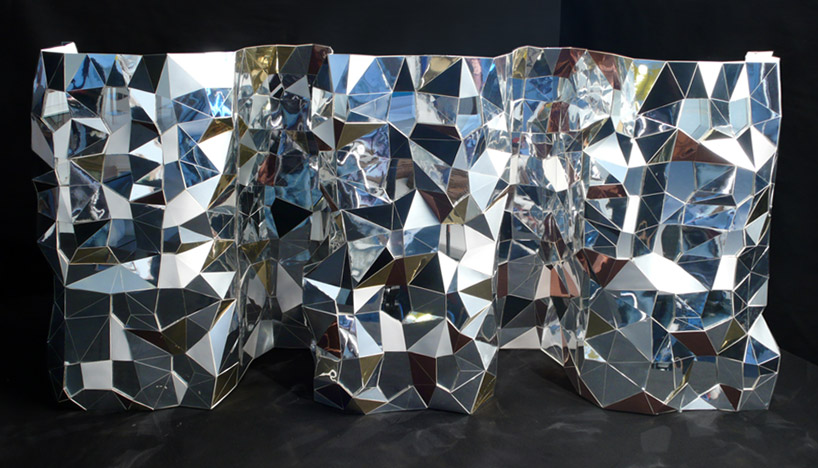 model of facade treatmentimage © greg lynn form
model of facade treatmentimage © greg lynn form
do you have any pets?
our dog just died so we’ll get a new dog soon. we have a great cat.
I assume you notice how women dress?
I really like to follow what women wear. I have a wife and a daughter and they, for the time being, can wear the same clothes. so, how women dress is a major topic that I feel in the middle of. although, I try not to have too many strong opinions about. I just did some jewelry for swarovski and it was great to have women in the house because I could bring home 3D printed models and try them out. I could do sketches and see what they thought. my wife, looks great in marni clothes.
what kind of clothes do you avoid wearing?
I don’t spend a lot of time in suits. it’s one of the great things about the way my life is organized now. the clients are all worse dressed than I am. it’s maybe a sign of power if you can wear jeans and a t-shirt to a meeting. so it means everybody gets to be a little more causal among men. on the other hand, I’m a little bit burned out on that. in southern california, there’s a bohemian casualness, which is very, ah, perfected. I’m surrounded by people in five thousand dollars of causal clothing. I do like, you know, sun tanned, fit, casual, warm climate people. I prefer something that has a little bit of an experimental edge.
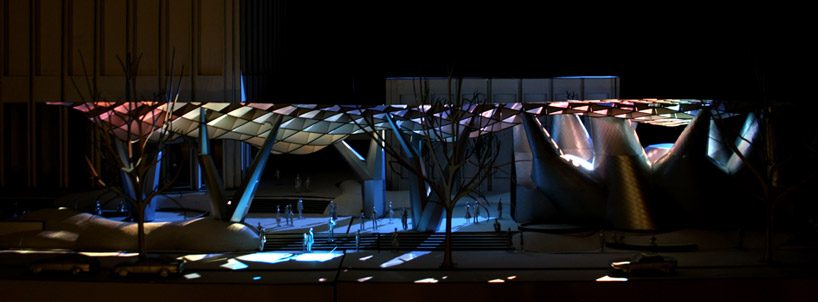 ‘5900 wilshire restaurant pavilion’, los angeles, usaimage © greg lynn form
‘5900 wilshire restaurant pavilion’, los angeles, usaimage © greg lynn form
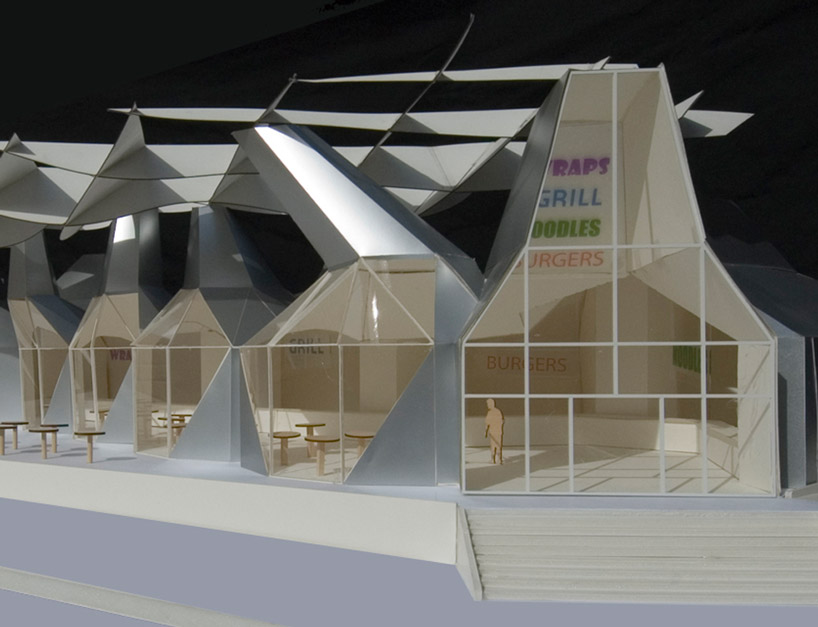 model of exterior image © greg lynn form
model of exterior image © greg lynn form
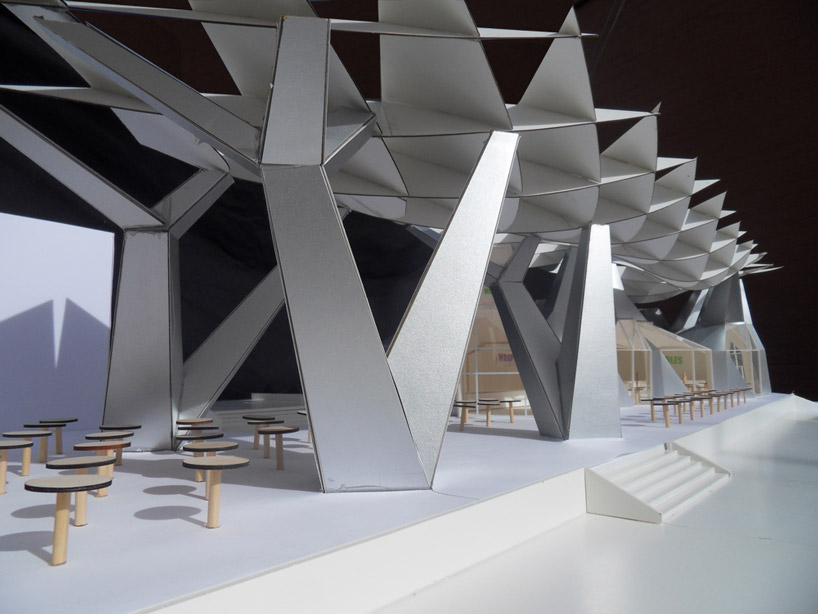 image © greg lynn form
image © greg lynn form
when you were a child, did you want to become an architect?
my mother always wanted to have a son that was an architect. so it wasn’t my idea, it was my mother’s idea. when I was a little boy I would draw perspectives, and you know, I learned all of the tools of architecture before I was even in college. so it let me do other kinds of things than have to learn how to draw. so that was good. but yeah, I was tracked.
where do you work on your architecture projects?
I could say that I work sometimes, when I am traveling, but mostly in the office. I still am involved in all the phases of design. the office is small, the technology never gets out of my control. one thing that is good, is sometimes I’ll even just grab a plan and start drafting on a plan or section or something like that. I’m building a boat for myself and I consider that work because it’s learning about carbon fiber and new materials and learning about different kinds of computer software. I really try to keep my work life interesting and I try to turn everything that’s causal into work somehow.
 ‘world trade center site proposal’ by greg lynn form, new york, usaimages © greg lynn form
‘world trade center site proposal’ by greg lynn form, new york, usaimages © greg lynn form
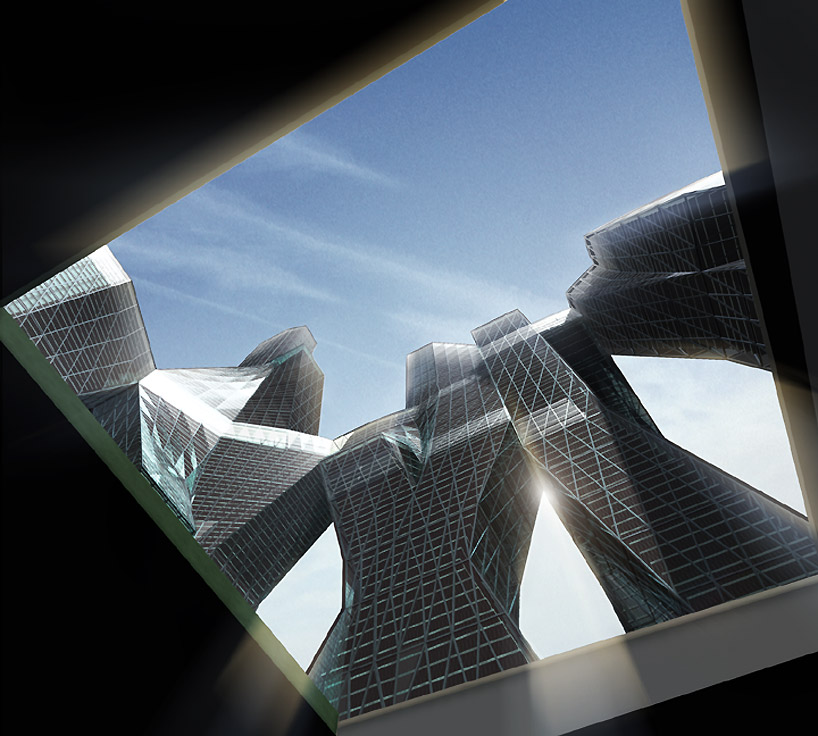 image © greg lynn form
image © greg lynn form
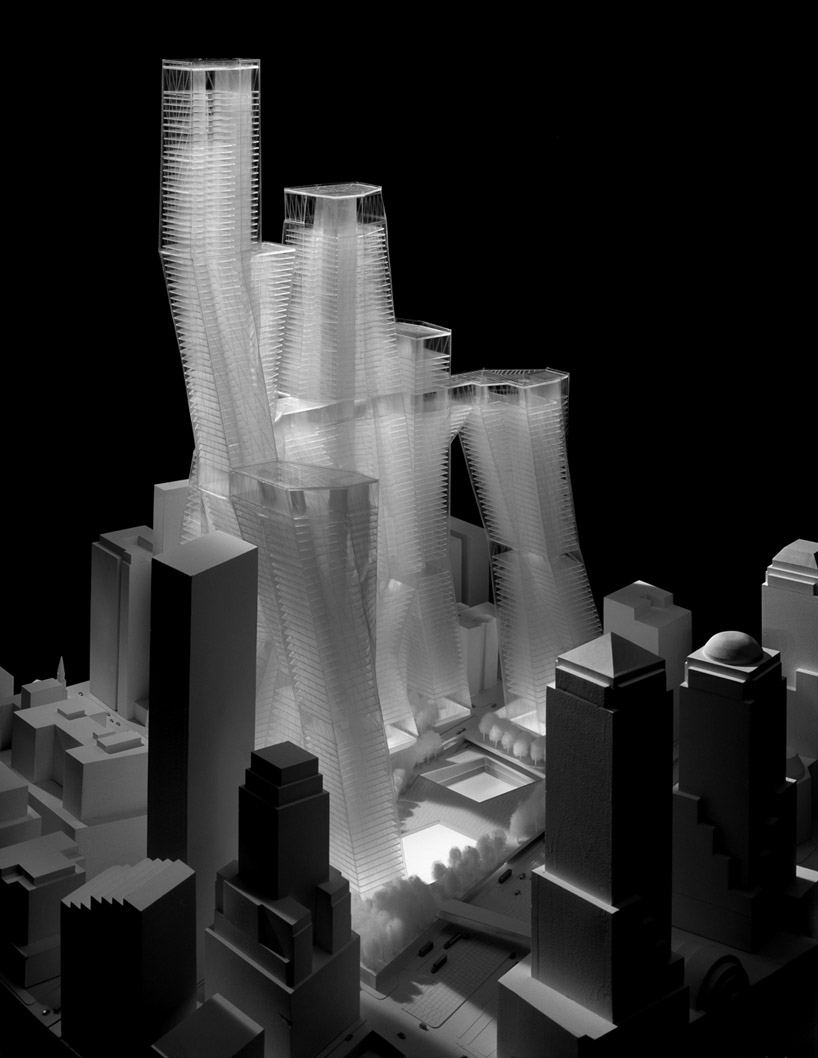 model of proposalimage © greg lynn form
model of proposalimage © greg lynn form
do you discuss your work with other architects?
most of the other architects I talk to, I talk to through teaching. for example at UCLA, I have a lot of colleagues and usually I’ll have an idea that’ll start in a commercial project, but because we either run out of time or want to do something further I’ll bring it into the university and that’s a good way to talk to everybody about it. also I discuss with zaha hadid and wolf prix and hani rashid, which I see a lot in vienna. then tom maine and frank gehry and neil denari, hitoshi abe, heather roberge are the people I see in LA. and if I have a good friend, like ross lovegrove or somebody, I end up dragging him into teaching with me at a university just cause it’s a good way to talk to people.
is there any designer and/or architect from the past, you appreciate a lot?
well, both of my in-laws are baroque architecture historians. I love learning about pietro bernini… I think I had a strong reaction against modern architects because, one, my mother dragged me around to see every frank llyod wright building and two, when I was a student, mies and corbu, were like everywhere. that it’s been twenty years ago and when I now see their work I can enjoy it. I just saw alvar aalto’s library in russia which used to be finland…
are there any contemporary architects you appreciate the work of?
I thought you said they had to be dead (laugh). I spend a lot time, sailing with frank gehry and mostly we talk about either sailing or architecture. tom baine… I try to avoid to talk to architects ’cause I think architects talk to each other way too much. but, yes, I talk to a lot of them.
describe you style, like a good friend of yours would describe it.
I think stylistically I probably have a language of curves and surfaces, that I’ve always been interested in. I mean, I think from the time I was even a teenager I was interested in drawing arcs and curves. I’ve always loved voluptuous , curved surfaces. I think, what I’ve been trying to do, is make the curved surfaces hyper-functional and hyper-structural, and not just stylistic shapes. it’s a thing, that’s continuous through everything.
describe your style as a friend would describe itvideo © designboom
please describe an evolution of your work, from your first project to the present day.
I was very interested in digital technology because it was clear that it was the future. I think that translated really quickly into new methods of construction and for a long time, I was interested in the digital control of conventional construction. in short: steel structures with a cladding with an interior surface. what I consider an evolution in my work is that now I’m interested in composites and shells. eliminating the number of pieces of a building. I feel a little bit out of step with my industry cause I think most architects are looking at increasing the amount of variation in the number of elements. so, when digital technology came, redundant skins of buildings and redundant layers of buildings, made every piece unique. I’m finding it all to be now a little decorative. I am trying to now put architecture on the same program as design has been on. so making things more efficient with fewer components which do more. I think that is the future, but for the time being, I’m a little out of step. I think it’s a little bit of an experiment now and for me it’s a change in my work anyway.
please describe an evolution of your work, from your first project to the present dayvideo © designboom
tell us about your team, is it a mix of different backgrounds?
there is a naval architect in the office who also is an aerospace engineer and specializes in composites. he figured out how to make certain structures lighter. we have, you know, a roboticist who is good at programming and who built the mechanism for the robot parts of the installations we do. the specialities of people are becoming more focused. I think, ten years ago, everybody was good at using maya software. now, everybody is kinda good in some engineering way. which is nice, I mean, it’s fun.
which project has given you the most satisfaction?
every project is the most satisfying project until it’s over. I do like when somebody has an intimate relationship with something I designed. I think for both, the bloom house and the korean church the clients really adopted the building. while other things, didn’t get quite the same intense relationship. the fun thing about design is that you get that immediately. like you do jewelry, you do furniture, you know people sit in it, they wear it, they have an intimate relationship with it, but it doesn’t last long. also with buildings I want them to have that relationship, but it’s a little more rare.
is there something you would like to build?
I would like to take the future primitive which is a 1/5th scale model and build the full scale – rolling house. I don’t have a dream project, you always can find something worth spending your time on. almost every project has a potential to be a dream project.
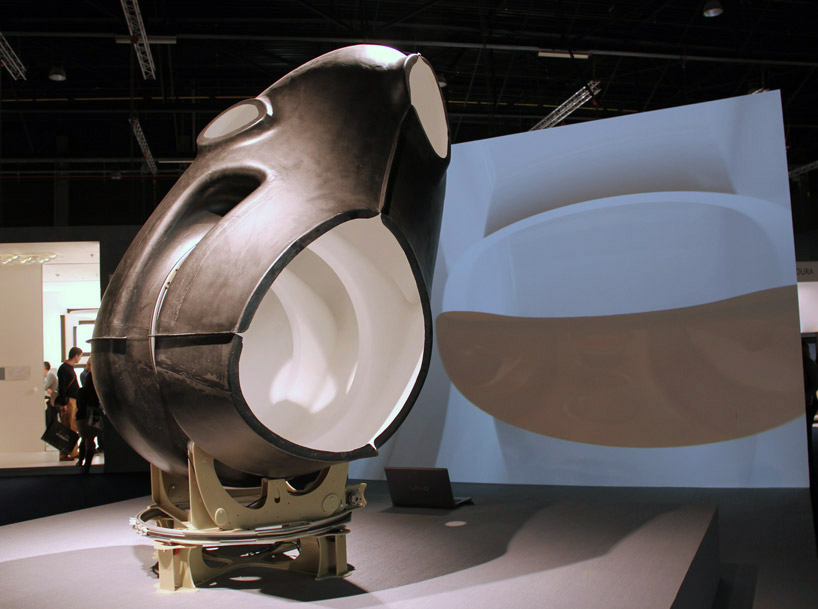 ‘RV prototype house’ on show at biennale interieur 2012 in kortrijk, belgiumimage © designboom
‘RV prototype house’ on show at biennale interieur 2012 in kortrijk, belgiumimage © designboom
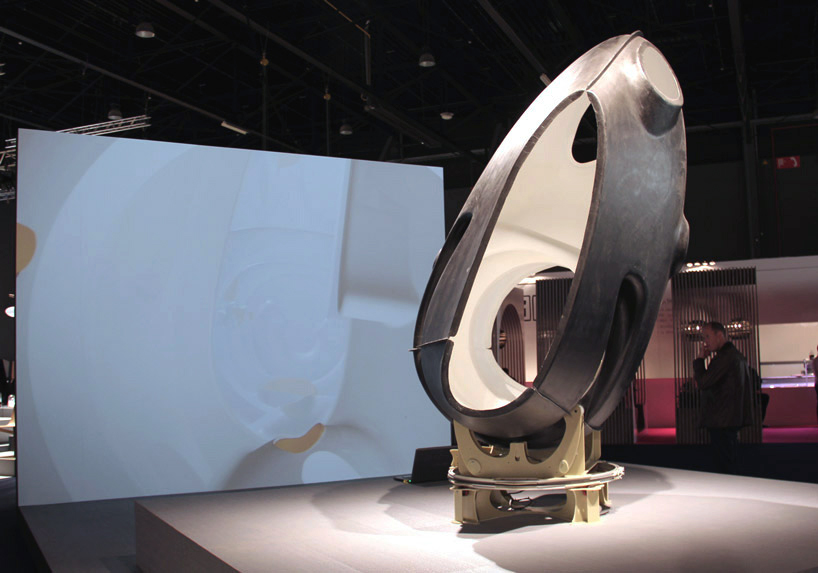 rotating modelimage © designboom
rotating modelimage © designboom
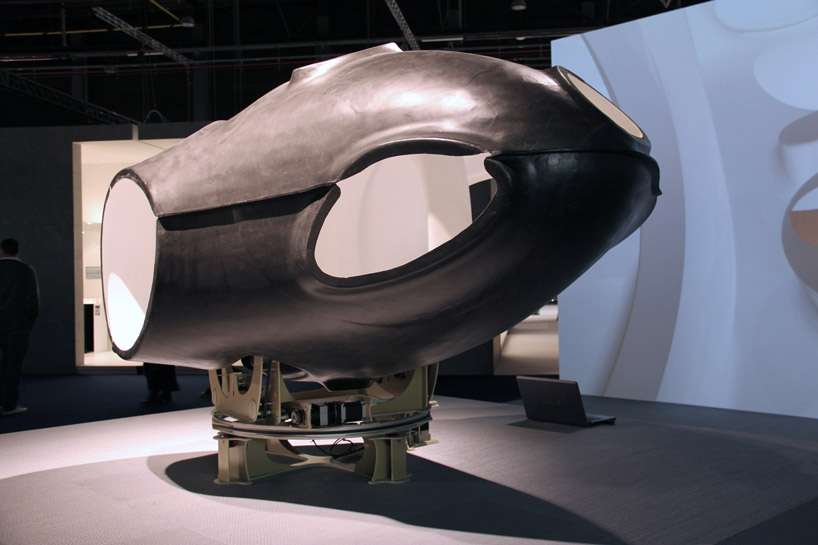 image © designboom
image © designboom
what advice would you give to the young architects?
I would say two things they should NOT do or be — the first is – don’t be in a rush. (I think the last two generations of young architects were really in a rush and, um, it just never works well in architecture). I also think you should never compromise when you are young. I mean you really have to manage compromise in architecture and if you do it too young, you’re over. one thing they should do is to try to make the built environment part of their daily life. too many people are willing to look at architecture because it is permanent. it’s something that can be out of step with their daily life. another thing (that I find in southern california) is that people have expectations for technology, they have expectations for their lifestyle, but they don’t apply those expectations to the building industry.
I think, if young architects are interested in robotics, then they should find a way to integrate it into the building. if they are interested in certain materials, they should find a way to integrate these into the buildings. if they like video games, they should find a way to have a building more like a video game and less like a book. trying to keep the level high for architecture is really a challenge because I think people have low expectations for it.
is there anything you are afraid of regarding the future?
I always assume that architecture and design kind of go up and down. I would say that the general public is really interested in architecture. I think that the architects have not been so interested in architecture. I think they are more interested in silly discussions about ‘starchitects’ and signature buildings, like david chipperfield protesting that he’s not a starchitect, meanwhile he’s like clearly lobbying to get a pritzker prize.
seriously, I’m afraid that our field isn’t going to know how to have a cultural argument and there’s not a critical argument anymore. there are just these ridiculous journalistic distinctions. and it’s been ten years, and I just assumed it was a little bit of a valley in criticism but maybe it’s the new norm. so that’s very frightening to me. it’s the loss of discourse, in a public way. I mean the newspapers, magazines, they have music critics for architecture criticism. it’s not a good time. I miss herbert muschamp, I miss nicolai ouroussoff, I miss all kinds of people and I don’t see them getting replaced fast enough. I am hoping the critical world, the journalist world… stays and keeps on trying to get better.
what are you afraid of regarding the future?video © designboom
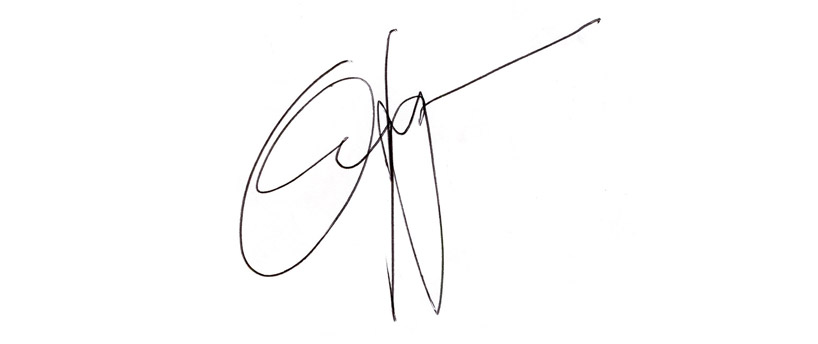
ARCHITECTURE INTERVIEWS (263)
GREG LYNN (8)
PRODUCT LIBRARY
a diverse digital database that acts as a valuable guide in gaining insight and information about a product directly from the manufacturer, and serves as a rich reference point in developing a project or scheme.
